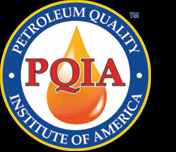 Platinum
Plus Motor Oil 5W-30
Platinum
Plus Motor Oil 5W-30
Platinum Oil, Franklin, MI
Purchased in: Verona Road Mobil, Madison, WI
Date of purchase: 9/15/2012
CONSUMER ALERT: The label on this product states "5W-30" motor oil. Test results show this product is not a SAE 5W-30, and does not meet any recognized specifications for motor oil. The viscosity of this oil is 74% below where it should be for a SAE 5W-30. To consumer's who likely don't relate to what viscosity means, if you see this brand on the shelf at a convenience store, shake the bottle; it will sound more like water in a bottle than oil.
Further, other than stating "Motor Oil," this product label includes no information as to the API Service Classification it meets. It's clear, however, from the data that the sample tested contains no additives. Because of this, and its very low viscosity, it is not suitable for use in any gasoline-powered automotive engines and will cause unsatisfactory performance and/or harm to an engine.
Click here for API Service Categories.
|
PETROLEUM QUALITY INSTITUTE OF AMERICA TEST PROGRAM
|
|
||
| Platinum Plus | |||
| PHYSICAL TESTS | Standard/ranges-b | Average-e | |
| TBN, mg KOH/g, (ASTM D2896) | 6.1 to 8.3 | 7.2 | n/r |
| Viscosity @ 100ºC, cSt, (ASTM D445) | 9.3 to 12.5 | 10.5 | 2.4 |
| Viscosity @ 40ºC, cSt, ASTM D445 | 55.8 to 65.2 | 61.88 | n/r |
| Viscosity Index (ASTM D2270) | 156 to 169 | 160 | n/r |
| Viscosity @ -30ºC mPa s (cP) (ASTM D5293) | 6,600 Max | 5,775 | n/r |
| Volatility, mass % loss, 1 hr, @ 250ºC (ASTM D5800) | n/a | 14.2 | n/r |
| ELEMENTAL ANALYSIS-c | |||
| Additives | |||
| Nitrogen μg/g (ASTM D-5762) | 599 to 990 | 804.2 | n/r |
| Calcium | 1,570 to 2,460 | 2,051 | <1 |
| Magnesium, ppm | 6 to 46 | 12.3 | <1 |
| Phosphorus, ppm | n/a | 703 | <1 |
| Zinc, ppm | 766 to 868 | 791 | <1 |
| Molybdenum, ppm | <1 to 269 | 60 | <1 |
| Barium, ppm | <1 | <1 | <1 |
| Boron, ppm | <1 to 237 | 79 | 1 |
| Silicon, ppm-d | 3 to 9 | 5 | <1 |
| Potassium, ppm | 9 to 17 | 11 | <5 |
| Manganese, ppm | <1 | <1 | <1 |
| Titanium, ppm | <1 to 114 | 11 | <1 |
| Sulfur, ppm | 5,000 Max | 2,785 | n/r |
| Copper, ppm | <1 | <1 | <1 |
| Sodium, ppm | 5 to 454 | 172 | <5 |
| Vanadium, ppm | <1 | <1 | <1 |
| Contaminants | |||
| Silver, ppm | <1 | <1 | <1 |
| Aluminum, ppm | <1 to 3 | 1 | <1 |
| Chromium, ppm | <1 | <1 | <1 |
| Iron, ppm | <1 to 1 | 1 | <1 |
| Nickel, ppm | <1 | <1 | <1 |
| Lead, ppm | <1 | <1 | <1 |
| Antimony, ppm | <1 | <1 | <1 |
| Tin, ppm | <1 | <1 | <1 |
|
a- Click here for product label. b- Standards, shown in yellow are established by API, SAE and others. Ranges, shown in teal, represent the high and low data for the 13 major brands of API SN ILSAC GF-5 tested in September 2011. c-Test Method for metal analysis is ASTM ASTM D5185. d- Although silicon is used as an antifoam additive in lubricants, concentrations above 7ppm have been linked to contamination from abrasive material, e- Average of the 13 major brands of API SN ILSAC GF-5 tested in September 2011. |
|||
|
|
||||
| PLATINUM PLUS 5W-30 | ||||
|
The American Petroleum Institute sets forth a number of laboratory and engine tests required to meet their performance specification. Although laboratory tests alone cannot be used to establish if an engine oil meets API specifications they can be used to determine if it doesn't.
|
||||
| Viscometrics | ||||
|
The viscometrics DO NOT meet the required targets for a 5W-30.
Click here for more on chart and Viscosity@100ºC,cSt
|
||||
| FRONT AND BACK LABELS FROM PRODUCT TESTED | ||||
|
|
|||
|
|
|
|||

